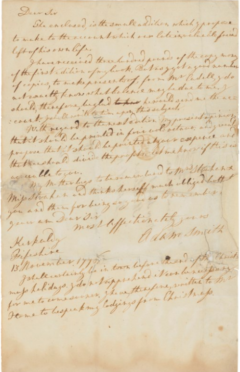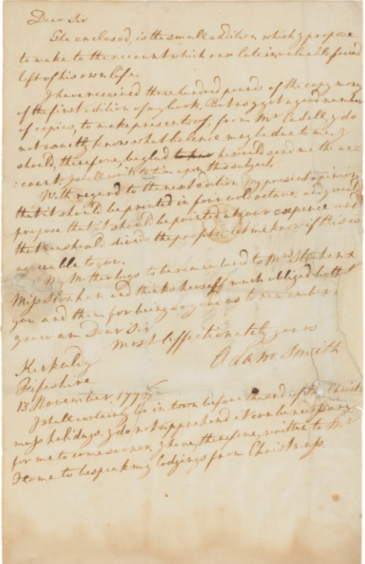This column has several times featured the sale of Adam Smith’s Wealth of Nations, the first and greatest classic of modern economic thought – and also its exponential rise in value. On December 12, for instance, I watched Smith’s personal copy sell in London for £900,000.
Never before, however, have I been able to offer an insight into the man himself. I can do so now, thanks to a rare letter from the same sale at Christie’s.
This was a letter signed ‘Adam Smith’ and sent from Kirkcaldy to his London publisher William Strahan on November 13 1776.
The letter originally enclosed Smith’s account of the last months of his close friend David Hume, and Smith refers to this in his opening, “The small addition which I propose to make to the account which our late invaluable friend left of his own life.”
Smith goes on to discuss his income from The Wealth of Nations, which had been published earlier that year: “I have received three hundred pounds of the copy money of the first edition of my book…I do not exactly know what balance may be due to me. I should, therefore, be glad he would send me the account. With regard to the next edition my present opinion [is] that it should be printed in four vol: octavo; and I would propose that it should be printed at your expense, and that we should divide the profits. Let me know if this is agreeable to you.”
Hume had died on August 25 1776, leaving a brief autobiography, ‘My Own Life’, which was published by Strahan the following year, with Smith’s ‘small addition’ as an appendix.
The letter carried pre-sale hopes of £55,000-£80,000. Auctioneer Eugenio Donadoni took it to £137,500.
Picture: Adam Smith letter, £137,500 (Christie’s).











